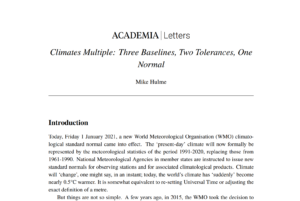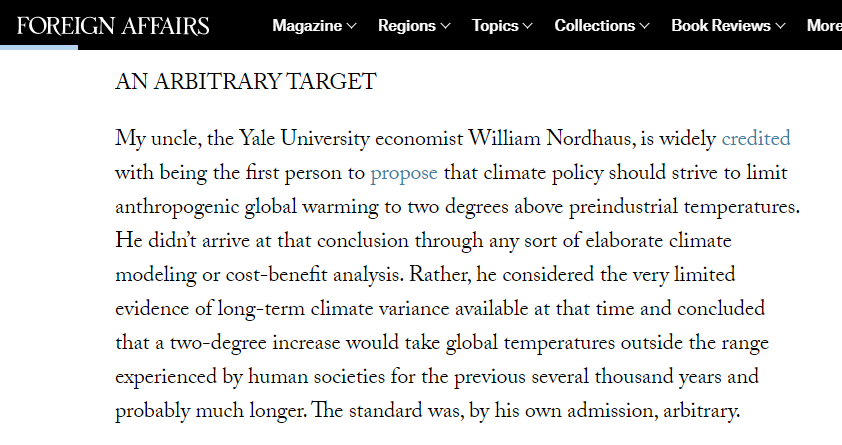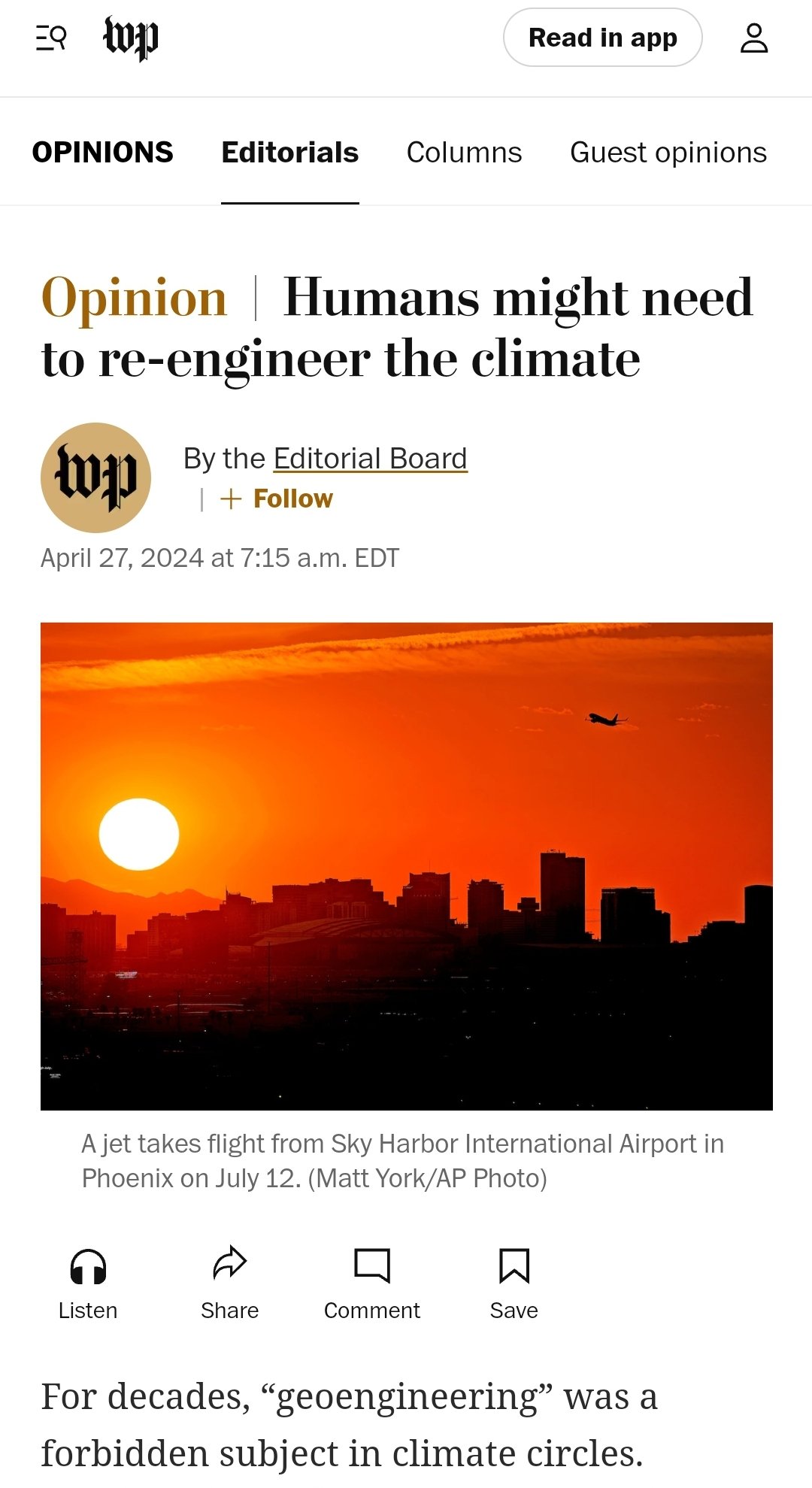Climates Multiple: Three Baselines, Two Tolerances, One
Normal
Mike Hulme
Excerpt: Friday 1 January 2021, a new World Meteorological Organisation (WMO) climatological standard normal came into effect. The ‘present-day’ climate will now formally be
represented by the meteorological statistics of the period 1991-2020, replacing those from 1961-1990. National Meteorological Agencies in member states are instructed to issue new standard normals for observing stations and for associated climatological products. Climate will ‘change’, one might say, in an instant; today, the world’s climate has ‘suddenly’ become nearly 0.5°C warmer. It is somewhat equivalent to re-setting Universal Time or adjusting the exact definition of a metre.
What started in the 1970s and 1980s as a pragmatic selection of the late nineteenth century as an analytical reference period (Nordhaus, 1977) had, by the twenty-first century, taken on great policy significance. Although the 2015 PACC formally adopted pre-industrial climate as its baseline, the precise temporal designation of ‘pre-industrial’ was left unspecified— whether for strategic political reasons (Geden, 2018), or simply because of a lack of awareness about the significance of the choice. Different ‘pre-industrial’ baselines have been adopted, either as discursive proxies for a general pre-industrial era or else used analytically to test the sensitivity of the ‘pre-industrial’ baseline to different definitions (Schurer et al., 2017). Equivalent diversity afflicts the designation of ‘present-day’ climate. Although often corresponding to a WMO 30-year normal, many other designations of ‘present-day climate’ have been adopted in different IPCC assessments—such as ‘1990’ (in IPCC AR1 and AR2) or the period 1986-2005 (in AR5)—and more generally by individual scientists. The WMO’s decision in 2015 suggests that for the purposes of climate change assessments, the 1961-1990
baseline should continue to be used.
…
Three Baseline Climates
So, what is the significance of the move to a new 1991-2020 WMO normal in January 2021? On the one hand, it is a pragmatic move to redefine ‘present-day’ climate for operational applications to that of the most recent 30-year period. On the other hand, it puts into play a third climatic baseline. Already existing is the ‘pre-industrial’ climate of the late nineteenth century and the ‘historic’ climate’ of 1961-1990, the latter about 0.3°C warmer than the former. And now there is the new ‘present-day’ climate of 1991-2020, in turn about 0.5°C warmer than the ‘historic climate’ of 1961-1990. And in addition to these three climatic baselines, there are the two climatic tolerances enshrined in the PACC of 1.5° and 2°C.
Climatic normals and baselines give precise numerical form to the rather intangible notion of climate: an idea that imposes a degree of imaginative order upon the human experience of atmospheric chaos (Hulme, 2016). While baselines can be either descriptive, predictive and/or normative, climatic tolerances are more explicitly normative. The adoption of particular baselines and tolerances is therefore an overtly political process with geopolitical, ethical and technological consequence. As with the adoption of other universal referential markers— for example the Greenwich Meridian as zero longitude, the metric system, or the formula for water as H2O —these processes entrain historical trajectories, cultural imaginaries, curious serendipities and power dynamics. I will investigate these contingencies at greater length in a subsequent article.
…
‘Dangerous climate change’ can be defined in either absolute or relative terms. But if defined in relative terms then it matters not just how much deviation from ‘normal’ is deemed
tolerable, but crucially what is deemed ‘normal’ in the first place. Combining a climatic tolerance of 2°C—or indeed 1.5°C—with a pre-industrial baseline yields a very different climate target than, say, using a 1986-2005 baseline, the period widely adopted by IPCC AR5 Working Group I as their analytical baseline. The choices of both baseline and tolerance are politically charged. They carry significant implications for historic liability for emissions (La Rovere et al., 2002), for policy design (Millar et al., 2017) and for possible reparations (Roberts & Huq, 2015).
…
Full analysis by Dr. Hulme:
Click to access letter20210114-29890-607vcm.pdf
#
Related:
Book Excerpt: In 2007, Jones emailed, “The 2 deg C limit is talked about by a lot within Europe. It is never defined though what it means. Is it 2 deg C for globe or for Europe? Also when is/was the base against which 2 deg C is calculated from? I know you don’t know the answer, but I don’t either! I think it is plucked out of thin air.”
“Two degrees is not a magical limit—it’s clearly a political goal,” says Hans Joachim Schellnhuber, director of the Potsdam Institute for Climate Impact Research (PIK).
Professor Roger Pielke Jr. explained in 2017 that the 2-degree goal “is an arbitrary round number that was politically convenient. So it became a sort of scientific truth. However, it has little scientific basis but is a hard political reality.”






